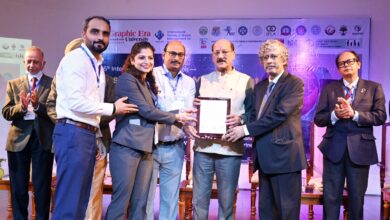Are the hopes and aspirations of statehood agitators being fulfilled?

Are the hopes and aspirations of statehood agitators being fulfilled?
Prem Prakash Upadhyay “Natural”
Bageshwar, Sept 4
The first week of September for the past three decades in Utttarakhand is that of remembrance of martyrs of statehood agitation particularly during the tumultuous times of 1994 when the then brutal regime tried to supress the separate statehood movement. A lot many functions and remembrance days are observed by the state government as well as political and social groups with a pledge to fulfil the dream and aspirations of martyrs as well as the common people of the hill state.
But the most pertinent question remain, whether those hopes and aspirations which fuelled the statehood agitation have been fulfilled or belied.
It was on September 1, 1994, the land of Khatima in Kumoan witnessed a tragic incident that left a lasting scar on the history of the Uttarakhand movement. Known as the Khatima Firing Incident, this tragedy shook the hearts of thousands of hill residents and accelerated the dream of a separate Uttarakhand state. On that day, the brutality of the Uttar Pradesh’s administration was unleashed on peaceful protests resulting into deaths in police firing. This incident it’s causes and consequences remind the present generation of the sacrifices through which this state came into being.
In 1990s, the common people of Uttarakhand then part of western Uttar Pradesh were agitating for a separate state. For decades, the Himalayan region had faced administrative neglect, economic backwardness, and disregard for its cultural identity. The demand was clear: a state that would understand the region’s geographical and cultural uniqueness and prioritize the development of its difficult terrain.
Khatima, a crucial town in today’s Udham Singh Nagar district, became a focal point of the agitation. On September 1, 1994, locals organized a peaceful procession against the government’s repressive policies. The rally included ex-servicemen, students, women, children, and ordinary citizens.
The streets of Khatima echoed with unity and determination. Protesters marched peacefully, raising slogans and voicing their demands. The first round of the march passed by the police station without incident. But as the rally returned past the station, tension brewed. Around 11:17 a.m., stones were suddenly allegedly hurled from the direction of the police station. This was no coincidence it was a planned move to provoke and brand the protest as violent.
Immediately afterward, police opened indiscriminate fire on the crowd without warning. The firing, which continued intermittently until turned Khatima into a scene reminiscent of Jallianwala Bagh. Panic-stricken protesters, including women, children, and the elderly, ran in terror to escape. Even those who had come for personal work at the tehsil office fell victim.
The result was heartbreaking as eight persons namely Pratap Singh, Salim Ahmad, Bhagwan Singh, Dharmanand Bhatt, Gopichand, Paramjeet Singh, Rampal, and Bhuvan Singh were martyred. Hundreds were injured, many left permanently disabled. From the very next day, spontaneous and intense protests erupted across Uttarakhand.
On September 2, 1994, as a reaction to Khatima, another massacre unfolded in Mussoorie. During a silent march, police and PAC forces opened fire on statehood activists, killing seven, including Balbir Singh Negi, Dhanpat Singh, Rai Singh Bangari, Madan Mohan Mamgain, Belmati Chauhan, and Hansa Dhanai. Even DSP Umakant Tripathi, who opposed the firing, was shot dead. He too was later honored as a martyr.
To justify its actions, the administration painted the rally as an “armed rebellion.” Women’s sickles and ex-servicemen’s licensed guns were labeled as weapons. However, eyewitness accounts and independent inquiries proved that the rally was entirely peaceful. The stone pelting and firing were deliberate tactics to malign and suppress the movement.
The Khatima and Mussoorie massacres united the hill people like never before. The sacrifices ignited anger and strengthened the movement. It became clear that bullets could not silence the people’s voice. This wave of protests continued to intensify until November 9, 2000, when Uttarakhand was finally carved out as a separate state after nearly 42 martyrs had laid down their lives.
As the Uttarakhand state set to celebrate 25 years of its existence, many of the dreams that fuelled the movement remain unfulfilled. Migration from the hills continues, corruption reigns, government education and healthcare are in tatters, agriculture struggles for modernization, wild animals conflict with human has made life difficult and industries suited for the mountains are not coming to offer employment. The commercial approach of haphazard development has resulted in frequent disasters taking a heavy toll of infrastructure and humans. The question persists—has the new state lived up to the sacrifices made?
The Khatima and Mussoorie incidents are not just episodes of violence; they are enduring reminders of pain, sacrifice, and unity. They prove that no oppression can silence people’s rightful demands forever. As we remember the martyrs of September 1994, it is our duty to honor their dream by building a prosperous, inclusive, and just Devbhumi Uttarakhand.
(The views are personal)v




